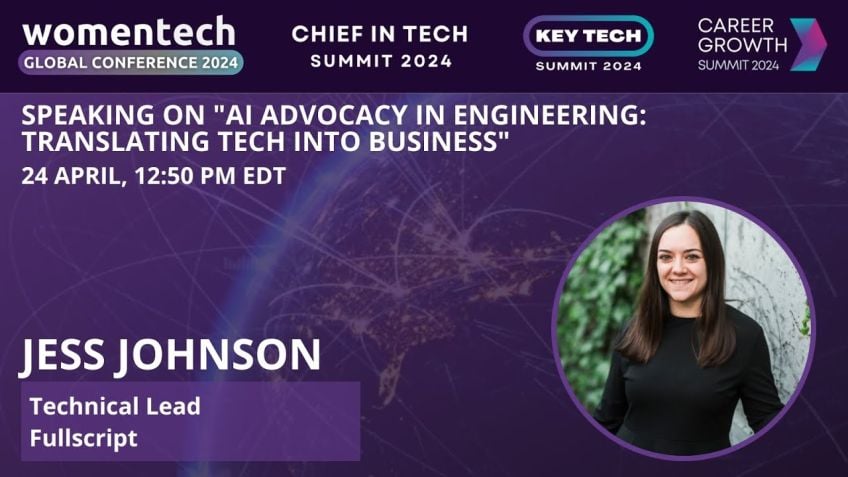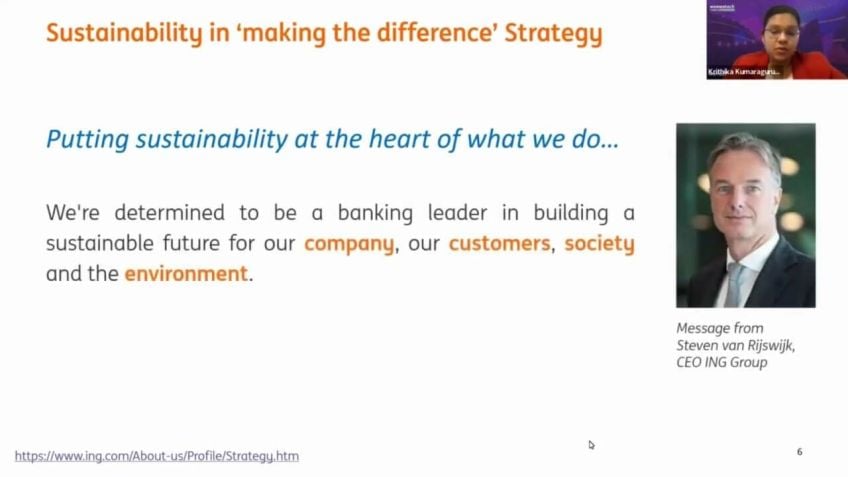Scaling large engagements through consistent customer experience
Smita Patil
Strategic Accounts LeaderScaling Large Engagements: Leveraging Customer Experience with Large Enterprises
As a director at Inforce, I have the opportunity to address the challenges that common large enterprises face. In this discussion, we delve into ways to navigate these hurdles and establish a more productive relationship between suppliers and customers.
The Challenges of Large Enterprises
Large enterprises, referring to Fortune 100 companies or corporations with over $50 billion in worth, have significantly different demands from mid-level or smaller enterprises.
Four main challenges typical large enterprises encounter include:
1. Changing Economic Environment: Changing economic factors such as increased inflation and high interest rates affect business scaling. This creates cost pressures, margin pressures, and intensifies the need for cost-cutting measures across organizations.
2. Increase in Customer Expectations: In the retail industry, for example, the consumer's expectation for a richer, more digital experience has significantly changed after the pandemic.
3. Cybersecurity Threats: The threat to data security isn't selective. Every industry, from tech to retail, can be a victim of cyberattacks. This pushes cybersecurity to be a major budget point.
4. Supply Chain Challenges: Global issues like the ongoing pandemic have disrupted the supply chain, creating product deficits and inconveniences for end consumers.
Addressing These Challenges
Understanding these ever-changing challenges enables us to proactively address the needs of our clients through several routes:
1. Postmodern Integration: Assisting with the process of merging businesses and accelerating digital transformation.
2. Joint Solutions and AI Data Investments: Pairing with tech companies to sell, buy, and cater to customers together.
3. Improving Customer Reach: Enhancing customer value creation through memorable experiences improves customer satisfaction and longevity.
Leveraging Effective Financial Models
In the current economic situation, cost take-out proposals and a revenue share model can be attractive for clients. One possibility is a complete skin-in-the-game model, where the customer doesn't pay upfront, but commits a revenue share. These arrangements ensure long-term relationships with clients while aligning our goals for growth and profitability.
In conclusion, navigating the challenges that large enterprises face involves understanding these hurdles, creating proactive pitches to address them, and presenting appealing financial models for our customers. By optimizing these strategies, we can bring consistent value through customer engagement.
This blog is based on a talk given to the women in tech community on the subject of scaling large engagements with large enterprises. For any questions or further discussion on the topic, feel free to reach out or leave a comment below.
Video Transcription
Uh This is Nata. Uh And uh I would like to thank women in tech team for giving me this opportunity to talk about this very important topic. A very significant in this today's uh situation.Uh scaling large engagements uh with large enterprises uh really from, you know, how do we use customer experience to do so? So this is uh incredible. Thank you very much for giving me the opportunity. I work as a director with in forces currently. And uh we'll quickly go through uh the challenges, what kind of challenges typical large enterprises face? Why those uh challenges or gaps uh are addressed internally or externally through suppliers or how we can be partners, not only suppliers? So that is the first part of the presentation and part of the presentation is mainly on how do we create proactive proposals and what kind of financial model models would be more lucrative for the customers? So uh I'll dive uh directly into what has been changing, what are the ever changing needs and challenges of large enterprises? So what are the large enterprises, large enterprises are the enterprises who are say 50 billion or fortune 100 companies? Of the world, they are very very stable businesses. And uh essentially what we are talking here is providing services to these large conglomerates, their needs, their challenges, their demands would be totally different compared to any other customers or enterprises in mid level or smaller enterprises or start ups.
Now large enterprises in in this given situation of 2023 right? We have been talking about inflation, we have been talking about challenges. So uh I have tried to bucket it in each area and uh we will talk about those challenges. So either it will be a combination if you, if you want to apply it to your clients, uh either it will be mix of it distributed of whatever what you see on the screen or it will be just certain challenges. Uh If it is a large enterprise so quickly starting uh starting with the challenges part. Uh The first one I mentioned here is changing economic environment. We have seen inflation going to 9 10%. Uh It's still a problem. Interest rates are very high doing business scaling business is an issue that is tremendous cost pressure on our large customers or large enterprises who are our customers. And hence there are uh margin pressures and cost cutting going on across organization. We hear about the layoffs, we hear about the cost control measures, reducing outsourcing spend or reducing other things which are relevant or not relevant in the current situation. So, that is uh that is where we are uh in terms of, you know, the changing economic macro environment currently now, in this changing ever-changing situation, how do we really address that? How do we help our customer?
How do we, how do we really have that skill in the game? Be part of their show, be part of their uh investments and uh thus enhance our relationship and have a long term relationship. Have a long term, not only supplier and a customer, it could be a good GDM relationship, it could be a complete 3 60 degree uh relationship with our clients. Now, uh another challenge which customers are facing presently are increasing customer expectations. So here you can take an example of a large retail customer retailers. They have multiple retail stores. Now, what are the customers going end customers going to these uh retail shops to get the same experience? No, that has changed after pandemic, that has significantly changed after after pandemic, how immersive your customer experiences has been very, very important for these retail customers or retail and customers. So how do we, how do the retail clients of ours really try to enhance that digital transformation, enhance that digital experience for their end customers. And how do we be partner, their partner to do so uh accelerated this digital transformation. Why accelerate it? Because uh something which was supposed to be implemented after five years, you need to implement it today. So your digital road map is changing more than ever now.
Uh Given the situation we are in uh where we talk about chat bots, we talk about a is we talk about, you know, things to be done by just, you know, asking a chat bot to do something and that will be done in this current situation. Definitely, we can't have uh the road maps which were prepared say two years back, we have to be very agile. So our clients are agile and that's where we have to be very, very, we have to be very, very digitally transformative to them and to be part of their journey. Another important challenge every other customers may be. It is a high tech customer, retail, customer banking customer, any customer is facing the cybersecurity, it's across, you can see our mobile device, laptops, everything is it every device is associated with some or other threat? So data security devices, security, it could be information security, it could be secure, cyber security across and that is another challenge that every other enterprise is facing. So in terms of their it road map, they certainly have cybersecurity as a major budget or major area where they want to emphasize it could it is related to conducting business for them.
It is related to not only protecting their own information, it is also protecting their end customer information. And that is where cybersecurity has a very, very allocated, not only budget but has a very, very, this is very significant in terms of, you know, how much money they really focus or use for cyber security. Another uh supply chain challenges we have been hearing about it for the past three years. Uh That is, that is very much there. Uh they have reduced but not to the extent which we are thinking of. You can talk about Apple, you can talk about any of the it customers, that is the high tech customers. You can talk about retail customers. We have we are seeing in in fact, even CV S you go to CV S, you will not find most of the uh items which are, which were available before uh the pandemic. It was readily available if stocks were high. Now there are certain challenges or even in terms of medicine, PP challenges, supply chain chain challenges are still there. So uh that is another uh challenge area which customers are facing, it can be looked at two angles. One is actual supply chain.
Second is how do you help them in terms of navigating through digital transformation through your uh investments in uh enabling their products to move fast or implementing supply chain, new supply chain algorithms or say new supply chain planning systems for your customers. Now, sustainability.
We are talking about sustainable. We have been talking about sustainability for a while. Uh how do we really have that green energy? How do we really use clean energy? This could be for manufacturing customers. This could be for any uh in fact retail or uh uh any uh customers who are really into large scale manufacturing. So that is uh that could be another challenge. Uh That is uh that's, that's what we see uh with our customers. So essentially what we are looking at is profitable growth. Companies are looking at profitable growth and new finding new business avenues. These are large customers say 30 $50 billion plus enterprises. So they are currently looking for revenue growth. But yes, of course, with the profitability and they are trying to see what other avenues they can open up apart from the stable businesses which they have for 20 years, 30 years or more than that. So I'll uh I'll take a pause and then move on to the next slide. So uh with the changing we spoke about, we discussed, we had uh discussed about the changing needs, changing challenges, changing gaps. So these are ever changing. It's we have to be a child to address those needs of our customers. How do we create proactive pitches? How do we really address those challenges is the second problem.
Now, uh once you have sorted out what is the challenge pertaining to your customers through your large customers, you can create proactive pitches. These are just high level buckets which I had created in terms of proactive pitches. One is postmodern integration where you know these large enterprises would in current situation, they would, they would go ahead and merge certain businesses, acquire certain businesses. How do you do post merger integrations for them? How do you accelerate digital transformation for them? How do you have joint solutions?
I'm talking about high tech customers, right? How do you have joint solutions with the intel of the world or say any of the high tech companies semiconductors A MD or a MD of the world? And you, you cater to your customers together, thus forming a kind of complete 3 60 where you sell to buy from and have a three and have a GTM as well. Uh With the customers, another two areas are A I and A I and data. Uh with current situation, uh we are, we are seeing a lot of surge in the A I Investments. Data has been always there like a data security is more for now and how we really enhance customer reach through ongoing customer value creation through memorable experiences that you can have for your end customers. And that's improving your customers satisfaction and of course, the wrong longevity for yourselves.
What would be the on-demand kind of fulfillment or what could be the personalized services anywhere real time. So these could be some of the areas which certainly uh would help in creating proactive pitches for your large customers and engaging them to the last to the to their end to their end customers. The final one final slide is on the financial models, uh financial models, these are just uh examples in current situation, certainly cost take out because we spoke about the cost pressures, the margin pressures, cost take out proposals would be certainly uh very, very uh lucrative uh where you can combine it with investments, you can combine it with revenue share model where you can say, OK, I we we will uh work with you on a certain digital transformation and you can pay us based on revenue share.
There is an illustration here on the screen which talks about say where you know they don't have, the customer doesn't have to pay upfront. This is just one of the models they don't have to pay upfront. This is complete skin in the game. This will ensure longe longevity for yourselves uh with the clients. Now, here we are talking about the client revenue is up to 10 million. This is again an administration, the revenue share is 2% 4%. You can decide on this lab structure that you want to create and the 10 to 20 it is an incremental slab structure where uh whatever revenue customer is going to generate or whatever cost savings customer is going to generate. You get share out of it. Initially, customer doesn't have have to invest anything. They have to give us the road map. How do they really want to have this digital transformation? It could be y implementation, it could be data, data and analytics, it could be any area or even product development, right?
Or it could be product sustenance. How do you really charge? So charging can be in a different way. Uh This is more of investment way where we are saying, OK, uh this is the cost savings we will give and say out of 30% cost savings, you give us back maybe 5%. If we are able to do say 35% this is the additional percentage in terms of slab structure we will get or if it is a product uh ownership or product sustenance kind of business where we take some product from high tech customer and we sustain it. In that case, we can ask for a revenue share, we will do the complete development, we will do the engineering and we will ask revenue out of it or it could be a supply chain related aspect of the organization where you are saying, OK, give me certain revenue percentage of this work that whatever planning we are doing whatever new plan, new implementation, system implementation we are doing.
And that is how you can use these models, financial models together in current given in current situation where we are talking about cost pressures, margin, pressures, inflation. And I don't want to say it will go into a conversation, everybody is talking about it, but I don't want to uh essentially it will be a tough path, but we will have a landing uh overall. So that's, that's pretty much what I, what I had for today. It is, uh again, I'm very thankful to the women in tech community uh to have me here to talk about. This is a very uh important subject I believe. Uh when we are talking to our customers, when we are talking to our uh customers and customers, and how do we really bring value uh through consistent customer engagement? I would like to, uh, if you have any questions, uh, I, I like to give some, uh, last few minutes for questions.






